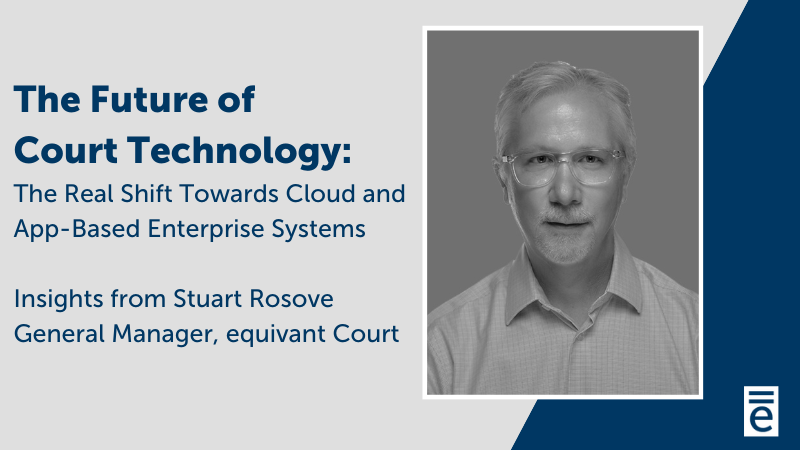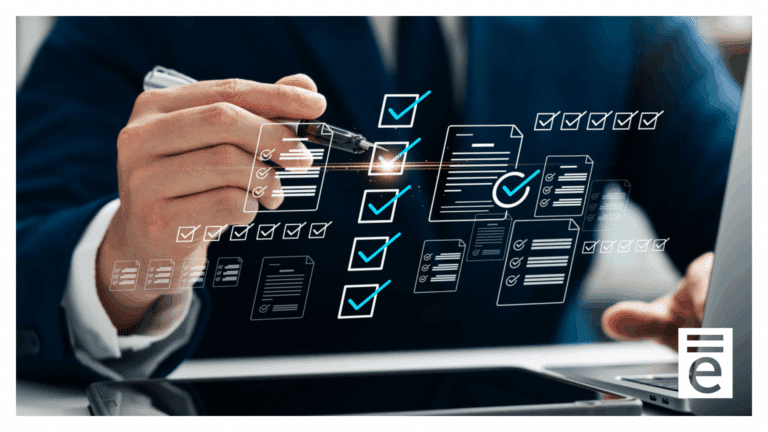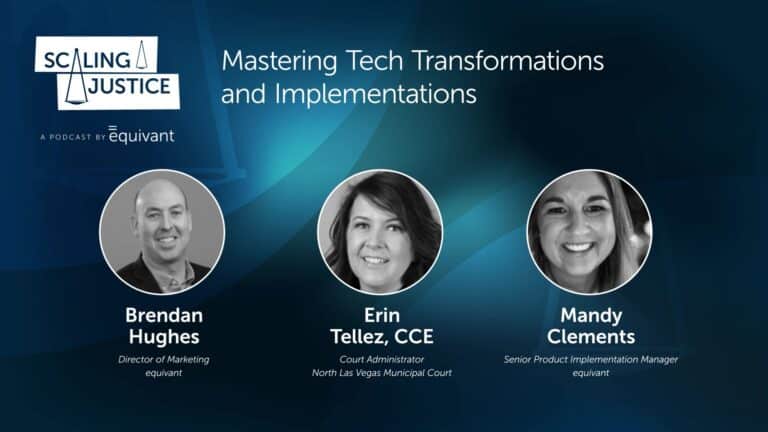The judicial system is on the brink of a technological revolution. Traditional client-server and web-based (thin client) enterprise systems are rapidly losing favor among court employees, paving the way for cloud and app-based enterprise solutions. This shift is being significantly accelerated by a new generation of technology-immersed staff and an increasing number of self-represented litigants (SRLs) who are deeply engaged with consumer smart technologies and the gig economy. The confluence of these factors, combined with advancements in cloud security and artificial intelligence (AI), leads us to believe that within the next five years, the tolerance for outdated systems will dramatically decline.
To equivant Court, this trend is a wake-up call that can’t be ignored. This presents an opportunity to strike a balance between managing and enhancing legacy Case Management Solutions (CMS) to deliver present-day customer benefits while, in parallel, leveraging the legacy foundation to develop more advanced solutions on par with the current and emerging state of cloud technologies, including AI.
The New Workforce: Tech-Immersed and Demanding
The demographic shift in the workforce is one of the primary drivers of this technological transformation. Millennials and Generation Z, now entering the workforce in significant numbers, have grown up in a world where digital interaction is second nature. According to a 2019 Pew Research Center report, 93% of Millennials own smartphones, and 86% use social media daily. These individuals expect the same level of convenience and efficiency in their professional tools as they experience in their personal lives.
The gig economy has also shaped these expectations. Platforms like Uber, Airbnb, and Upwork have ingrained a preference for flexibility, mobility, and on-demand access to services. Court employees, influenced by this gig economy mindset, need the flexibility to perform their duties from various locations, times, and devices. Traditional enterprise systems, with their rigid infrastructure and often cumbersome interfaces, fail to meet these evolving demands.
An Increase in Self-Represented Litigants
An increasing number of self-represented litigants (SRLs) interact with the court system. SRLs often rely on digital tools to file documents and access case information. According to the National Center for State Courts, approximately 72% of family law cases involve at least one SRL. These individuals demand accessible technology that enables them to navigate the legal system effectively. Cloud and app-based systems, which provide intuitive interfaces and real-time access to information, are better suited to meet these needs than traditional or legacy systems.
The Rise of Cloud-Based Systems
Cloud-based enterprise systems offer a stark contrast to their traditional counterparts. They provide the flexibility, scalability, and accessibility crucial for modern court operations. For instance, according to a report from Colorlib, 94% of all companies worldwide use cloud computing, reflecting a broad acceptance of cloud solutions across various sectors. This trend is now penetrating the judicial system, where courts are beginning to adopt cloud-based case management systems that allow for remote access and real-time updates.
App-based systems, which are pre-packaged cloud-based systems, further enhance this shift by offering specialized functionalities tailored to specific court tasks. These modular systems can be updated incrementally, ensuring continuous improvement and adaptation to user needs.
Innovations in Cloud Security
Security concerns have historically been a barrier to the adoption of cloud solutions in sensitive environments like courts. However, recent innovations in cloud security have alleviated many of these concerns. Cloud service providers now employ multi-layered security protocols, including end-to-end encryption, advanced threat detection, and continuous monitoring.
Additionally, compliance with stringent regulatory standards, such as GDPR and HIPAA, ensures that cloud solutions meet the necessary legal requirements for data protection and privacy. Blockchain technology is also emerging as a powerful tool for ensuring data integrity and transparency in legal processes, offering an immutable record of transactions and actions.
AI: Transforming Court Operations
Artificial intelligence is revolutionizing court operations by automating routine tasks and providing advanced analytical capabilities. AI-powered tools can manage document reviews, streamline case management, and significantly reduce monotonous, detail-oriented tasks for Court staff. While we are still learning, AI is already being used in courts to save valuable working hours.
AI-driven predictive analytics can optimize resource allocation and scheduling, ensuring courts operate more efficiently. Natural language processing (NLP) technologies are improving accessibility by offering real-time translation services and aiding individuals with disabilities. These AI advancements are making court processes faster, more accurate, and more inclusive.
The Future Outlook
The convergence of these factors suggests that within the next five years, the tolerance for traditional client-server and web-based (thin client) enterprise systems in courts will decline significantly. The new generation of court employees and SRLs, with their high expectations for technology, coupled with the proven benefits of cloud and app-based solutions, will drive this transformation. Innovations in cloud security and AI will continue to address and mitigate concerns, making these modern solutions not just preferable but essential for efficient and secure court operations.
The judicial system is poised for a technological renaissance. Cloud and app-based enterprise systems will become the norm, ensuring courts remain robust, efficient, and adaptable in an increasingly digital world.
What this Means for equivant
The court industry has been talking about a shift to cloud-based systems for years. That is not new, nor is it being led by our industry. After all, ours is an industry that is, by its nature, extremely process-driven and rightfully dependent on legacy systems. “Tried and true” and “steady state” will always prevail over “leading edge,” because the risk of high availability and cost of change have the potential to negatively impact the current state of efficiencies.
What is new, however, is juxtaposing that interest in cloud-based systems with the other trends identified here to challenge the status quo and truly innovate such that high availability is never at risk, and the new systems have a lower cost as well as improved access to justice that fully satisfies taxpayers.
equivant Court is in a unique position because of our robust portfolio of different Case Management Systems – both legacy and new – that allow us to maintain the past and advance the present while accelerating toward the future. In practical terms, for example, this is how to practically deploy AI with legacy and current solutions so that it informs where AI will go. And ultimately, how to accelerate a future Court CMS to be on par with more current cloud and other emerging technologies.





